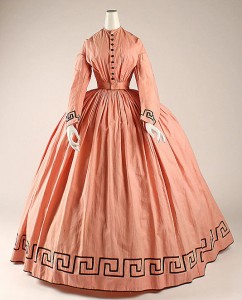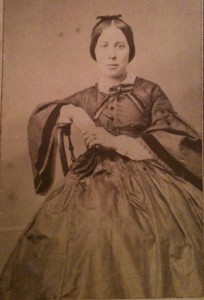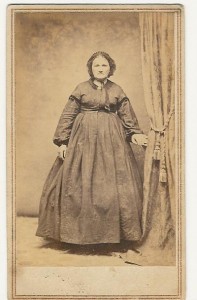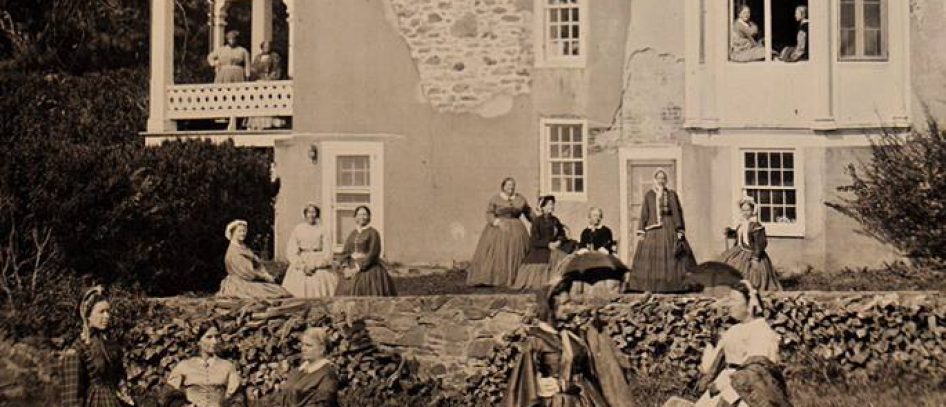Just visit our churches and public gatherings, where you will find no diminution of finery…”
Austin State Gazette, November 25, 1863, p. 2, c. 5
 The definition of a good dress will depend primarily, as does everything else, on your impression—who you are, where you are and when you are. A good dress would be worn in public such as visiting, going to church, when you are expecting visitors or for special occasions.
The definition of a good dress will depend primarily, as does everything else, on your impression—who you are, where you are and when you are. A good dress would be worn in public such as visiting, going to church, when you are expecting visitors or for special occasions.
A lower class impression would have a less-worn dress of calico in good repair worn with petticoats or hoops. This may also be appropriate for a late war middle class impression, again , depending on who and where you are. A middle class early war impression would call for something a little fancier such as a stylish silk or wool worn with hoops, while a wealthy impression would wear a silk or wool dress at the height of fashion.
, depending on who and where you are. A middle class early war impression would call for something a little fancier such as a stylish silk or wool worn with hoops, while a wealthy impression would wear a silk or wool dress at the height of fashion.
Late war impressions in the South call for a little less flash. A lower class impression good dress may appear more faded, perhaps patched. Middle class impressions might now appear in a good dress of calico; th eir silks or wools may be of an earlier style, appear remade or a bit old and faded. The wealthy may also appear behind the fashion trends shown in the ladies’ magazines or dresses may appear to be remade in an attempt to bring them up to style. While the North saw less deprivation than the South, late war impressions may still appear worn and less stylish.
eir silks or wools may be of an earlier style, appear remade or a bit old and faded. The wealthy may also appear behind the fashion trends shown in the ladies’ magazines or dresses may appear to be remade in an attempt to bring them up to style. While the North saw less deprivation than the South, late war impressions may still appear worn and less stylish.
It is important to note that, even in the late war years, hoops were still being worn, at least by the middle and upper classes.
